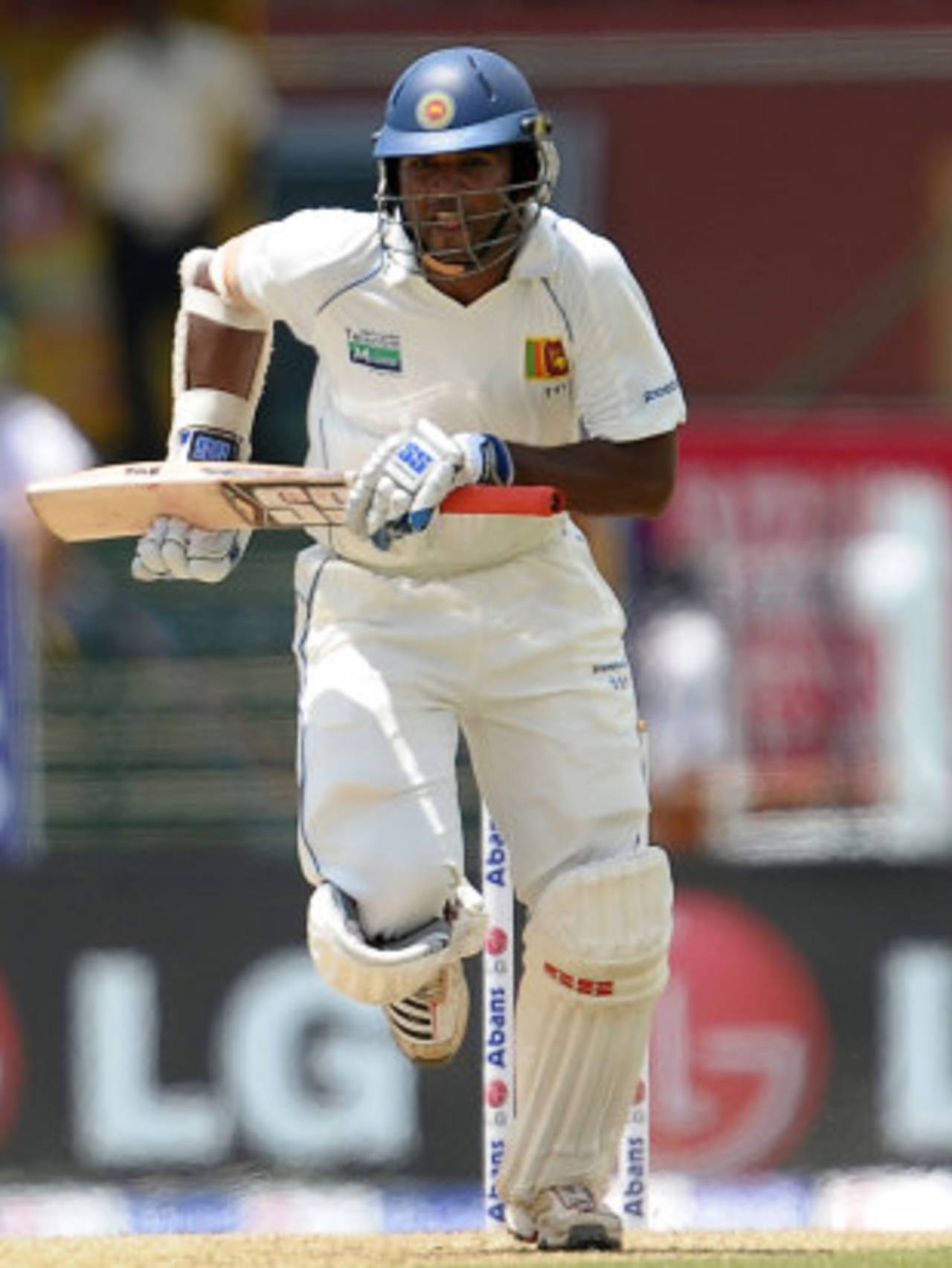How much can Hawk-Eye's lbw predictions be trusted? One-hundred percent? Not at all? If the answer is somewhere in between, then it makes sense for the ICC to apply the technology with a margin of error. And if there is a margin of error, there must be a line at which doubt disappears. And if there is a line, decisions will occasionally come down to millimetres.
Enter
Tharanga Paranavitana and
Trent Copeland. On the second afternoon at the SSC, Paranavitana was saved by an imaginary vertical line down the middle of the off stump. Had Hawk-Eye predicted that the centre of the ball was hitting that line or inside it, Aleem Dar's on-field not-out decision would have been overturned.
Instead, a fraction less than half the ball was within that 'out' zone and Copeland was denied despite viewers at home seeing the graphic of a ball smashing into off stump. "That's ridiculous. That can't be the umpire's call," Tony Greig said on the TV commentary. Twitter lit up with denunciations of the DRS. It was an infinitesimal margin.
But millimetres have always mattered in cricket. Why should this line be any different?
Pitch the ball a whisker outside leg stump and lbw is out of the question. Fail to plant a sliver of your heel behind the crease and you've bowled a no-ball. Slide in the outfield and kiss the boundary rope with body or clothing and you give away a four. These lines provide players, umpires and viewers with certainty.
So does the imaginary thread that bisects each of the outside stumps. A player knows that when he makes the 'T' signal that unless there is overwhelming evidence that the on-field umpire got it wrong, his review will be wasted. Ball-tracking is not intended as an omnipotent umpire-killer. The review system is based on the tenet that the on-field umpire is correct unless comprehensively proven otherwise.
"It's not necessarily about benefit of the doubt to the batsman," one of the world's leading umpires, Simon Taufel said earlier in this series, "but that the benefit of doubt goes with the original decision, and that's sometimes hard for people, and sometimes umpires, to get their head around."
To remove that premise is to turn umpires into no more than middlemen between computers and players. Retaining some of the human element in a game that has relied on it for 150 years cannot be a bad thing.
The answer is not to throw out the predictions made by ball-tracking entirely. A bowler should be able to have a not-out decision overturned if the ball is clearly hitting the middle of middle stump. But neither should ball-tracking be trusted implicitly on something so tenuous as clipping the top outside corner of the bail.
Significant faith in the technology would also be required if the imaginary line was to be moved to the outside of the stump instead of the middle. Is the science that good? Why not err on the side of caution?
Nor should the TV official tell his colleague what percentage of the ball is hitting and allow the on-field umpire to make the call. Some umpires would overturn if 1% of the ball was hitting and others would refuse to do so even if 49% was striking the stumps. Players deserve to know where they stand before requesting a review.
Under the current system, the rules are rigid and transparent. Perhaps a team could be allowed to keep its review if an lbw is shown to be an "umpire's call" according to the system. If it's that close, why penalise players for asking the question?
But unless ball-tracking is thrown out entirely or trusted completely, there must be a line. Wherever that imaginary border is placed, there will be line-ball decisions. And there's nothing wrong with that.
Brydon Coverdale is an assistant editor at ESPNcricinfo
